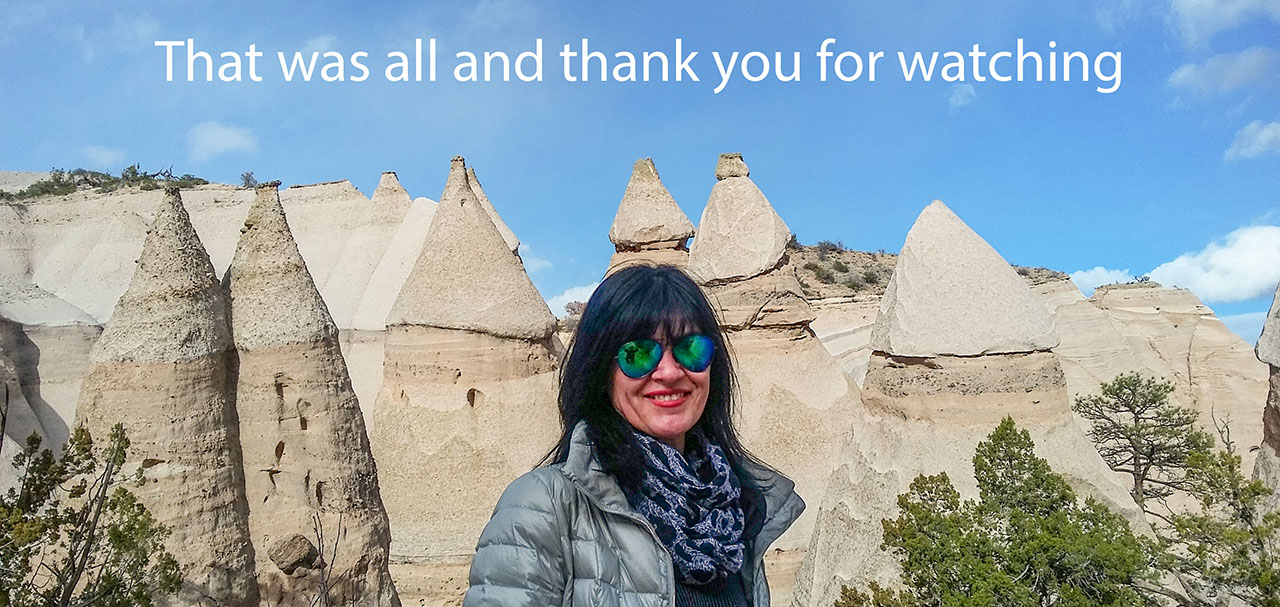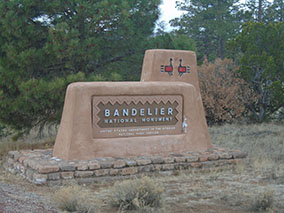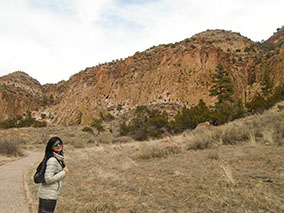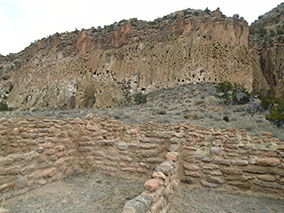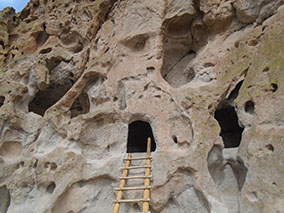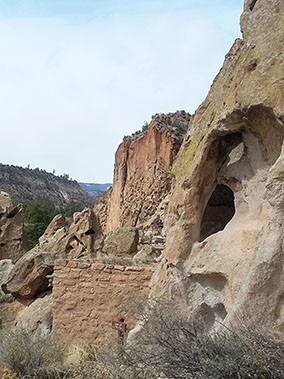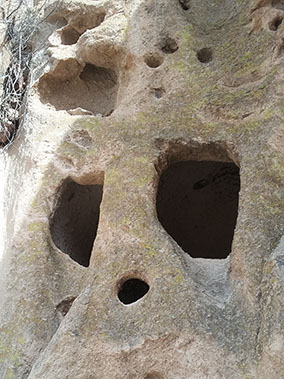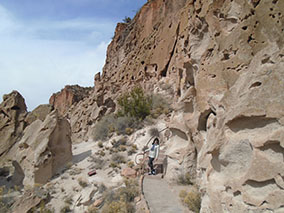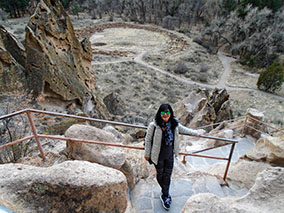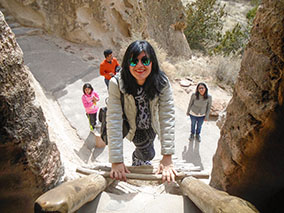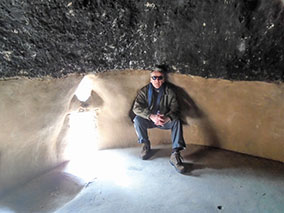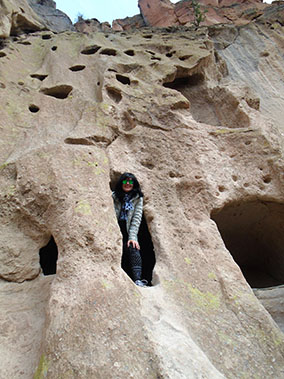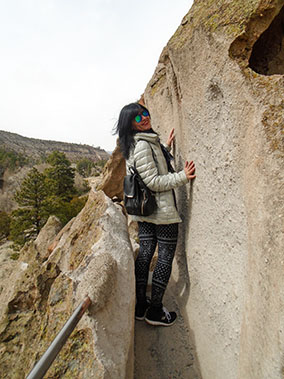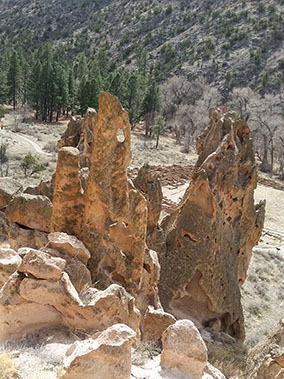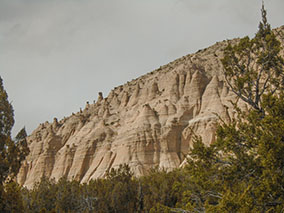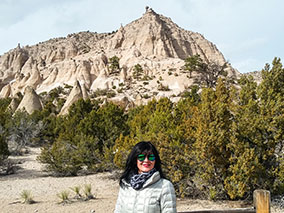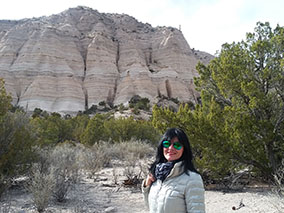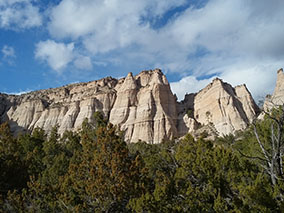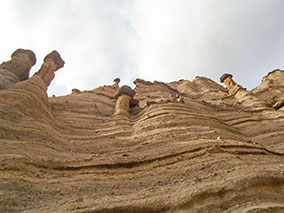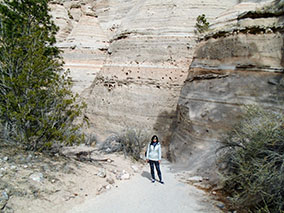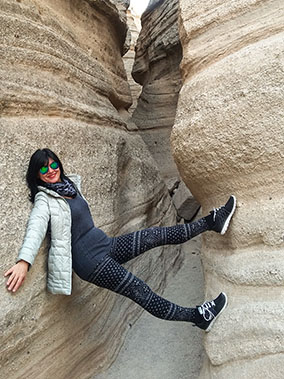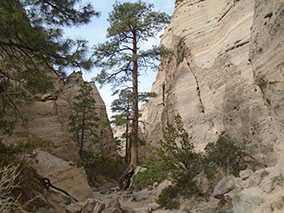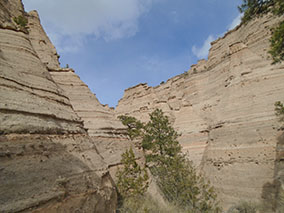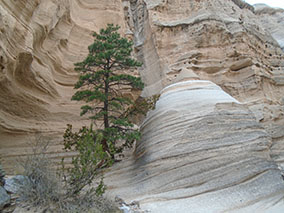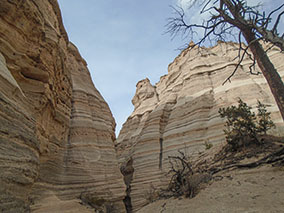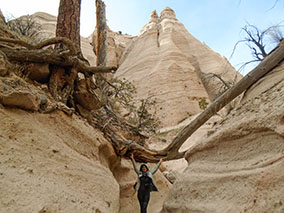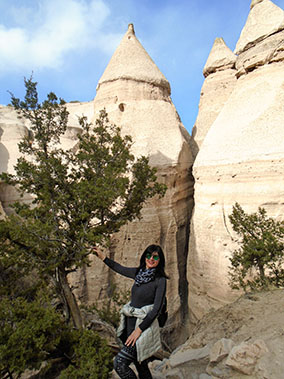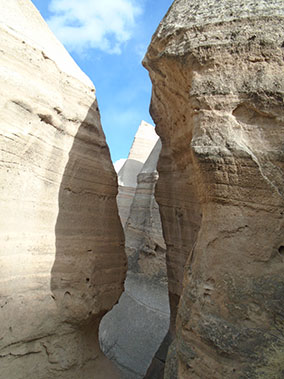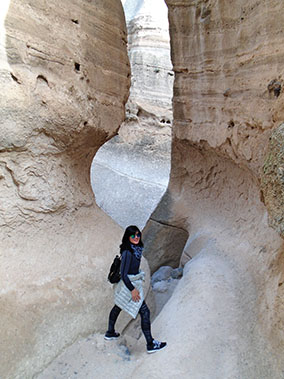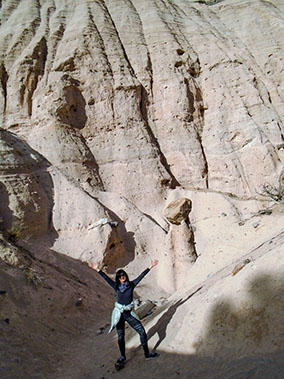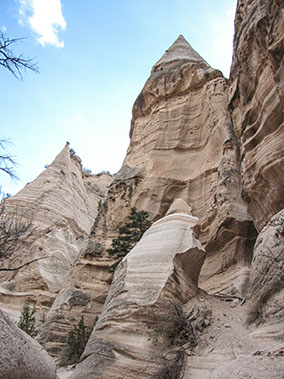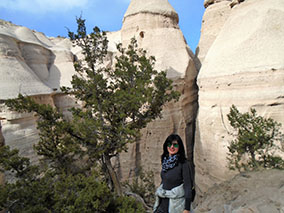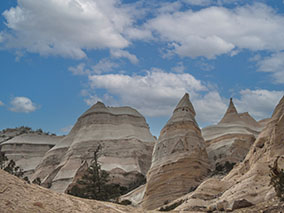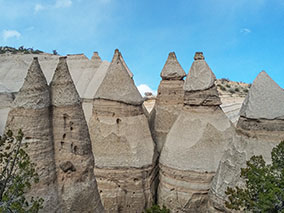Pueblos & Reservation
Evolving from a hunter–gathering lifestyle, the Pueblo people were known as peaceful farmers, herdsmen, basketmakers, and potters. The Pueblo American Indians expanded into an agricultural society–growing maize,pumpkins, seeds, tobacco, corn, beans, and squash while designing complex water irrigation systems.
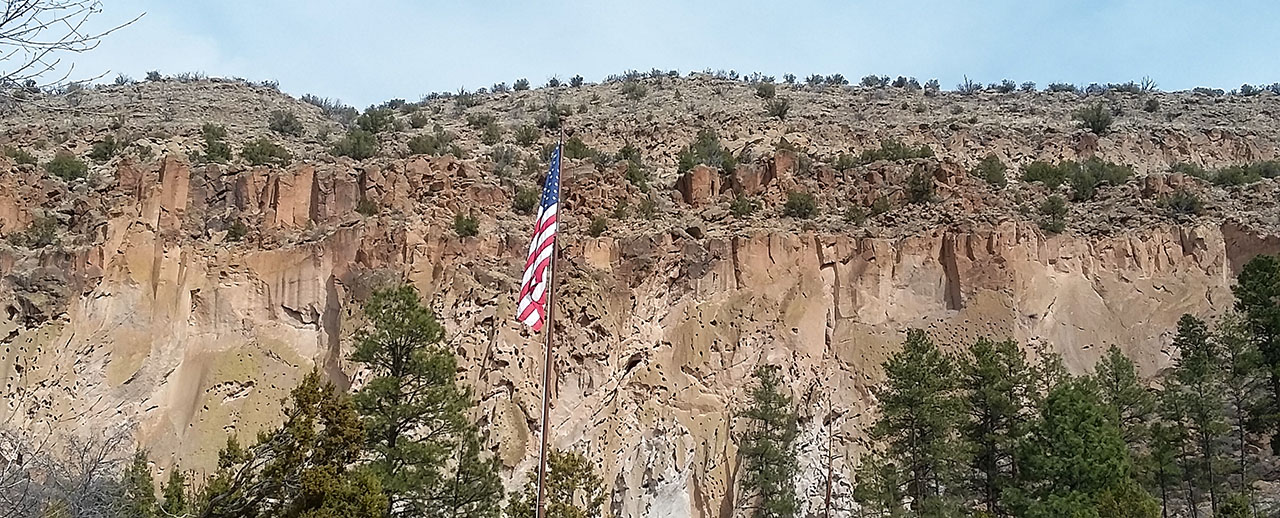
Bandelier National Monument (Frijoles Canyon)
Bandelier National Monument is a 33,677-acre United States National Monument in New Mexico preserving the homes and territory of the Ancestral Puebloans of a later era in the Southwest. It is named for named for Adolph Bandelier, a Swiss–American anthropologist who researched the cultures of the area and supported preservation of the sites. Human presence in the area has been dated to over 10,000 years before present. Permanent settlements by ancestors of the Puebloan peoples have been dated to 1150 CE; these settlers had moved closer to the Rio Grande by 1550. Looking over the cliff dwellings, Bandelier said, “It is the grandest thing I ever saw.”
Frijoles Canyon contains a number of ancestral pueblo homes, kivas (ceremonial structures), rock paintings, and petroglyphs. Some of the dwellings were rock structures built on the canyon floor; others were cavates produced by voids in the volcanic tuff of the canyon wall and carved out further by humans. There are multistory dwellings at Bandelier. Rock wall foundations and beam holes and cavates carved into tuff from upper floors.
Kasha-Katuwe Tent Rocks National Monument
Kasha-Katuwe Tent Rocks National Monument, located 40 miles southwest of Santa Fe, New Mexico (near Cochiti), is a Bureau of Land Management (BLM) managed site that was established as a U.S. National Monument by President Bill Clinton in January 2001 shortly before leaving office. Kasha-Katuwe means “white cliffs” in the Pueblo language Keresan.
It is a remarkable outdoor laboratory, offering an opportunity to observe, study, and experience the geologic processes that shape natural landscapes.
Driving directions:
From Albuquerque, head north on I-25 and take the exit for Santo Domingo/Cochiti Lake Recreation Area (Exit 259) off I-25 onto NM 22. Follow the signs on NM 22 to Cochiti Pueblo and Kasha-Katuwe Tent Rocks National Monument.
From Santa Fe, head south on I-25 and take the Cochiti Pueblo Exit 264 off I-25 onto NM 16. Turn right off NM 16 onto NM 22, and follow the signs to Cochiti Pueblo and the National Monument.
Note, following the GPS coordinates may take you through tribal lands that are not accessible. Please follow the directions above and access the Monument from I-25.
The area owes its remarkable geology to layers of volcanic rock and ash deposited by pyroclastic flow from a volcanic explosion within the Jemez Volcanic Field that occurred 6 to 7 million years ago. Over time, weathering and erosion of these layers has created canyons and tent rocks. The tent rocks themselves are cones of soft pumice and tuff beneath harder caprocks, and vary in height from a few feet to 90 feet. Many of sandier layers are conspicuously more orange in color. There horizons represent buried soils within the sedimentary deposits. On many of the tapering hoodoos are boulder caps that protect the softer pumice and tuff below. Some tents have lost their hard, resistant caprocks, and are disintegrating.
The monument is open for day use only and may be closed by order of the Cochiti Pueblo Tribal Governor. A 1.2 mile (1.9 km) recreation trail leads up through a slot canyon to a lookout point where the tent rocks may be viewed from above. A 1.3 mile (2 km) loop trail leads past their base. The park is located on the Pajarito Plateau between 5700 and 6400 feet (1737–1951 m) above sea level. The monument is closed to dogs
Science fiction TV series Earth 2 filming locations included the monument.
Unfortunately, we were not able to climb all the way to the top as the monument was closing for a day and the guard could’t make an exception. Regardless, we were so happy and excited with what we have seen up to that point and strongly recommend it for your next visit. It was an amazing and unforgettable experience.
